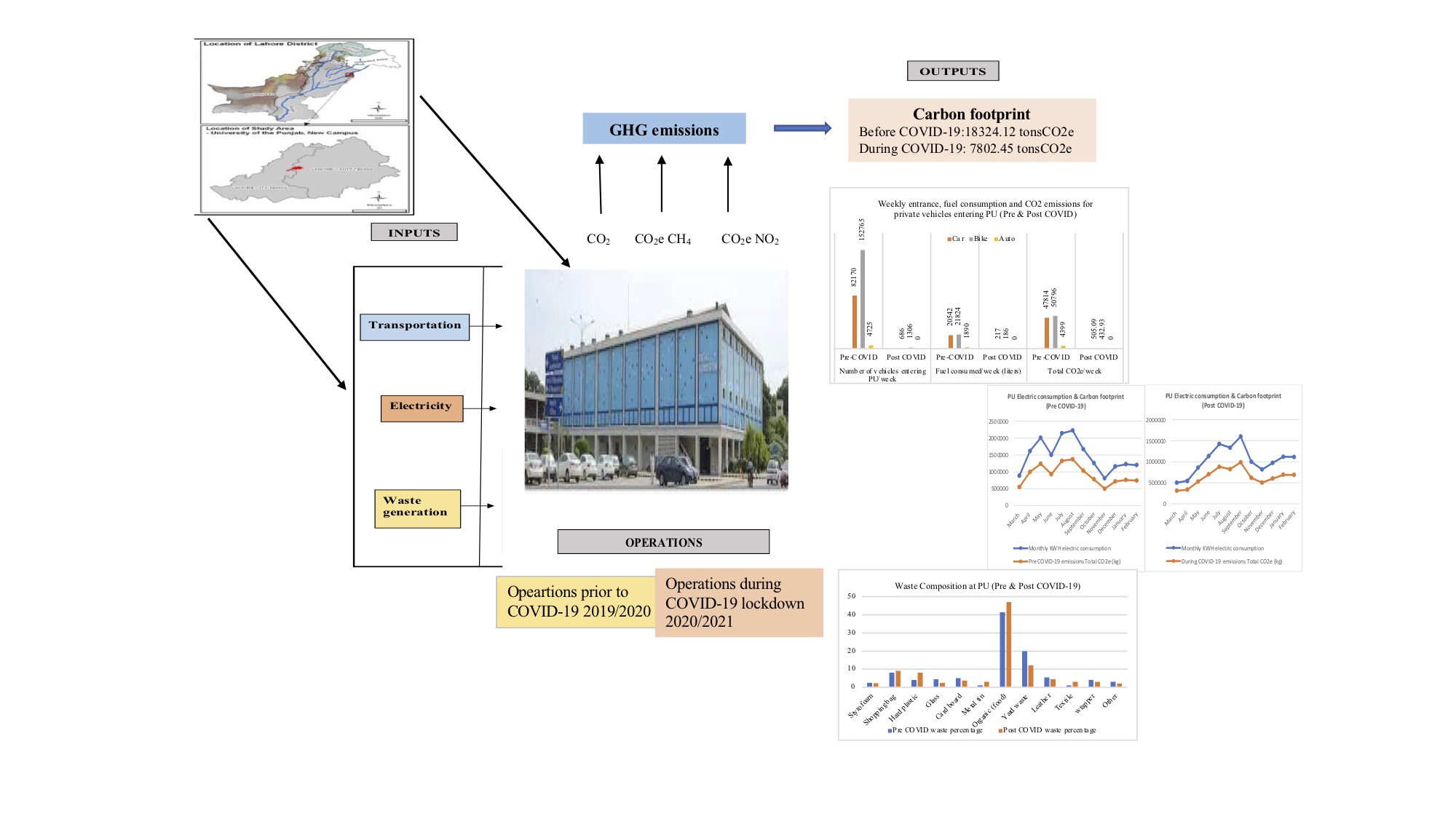- gnest_04222_published.pdf
-
Paper IDgnest_04222
-
Paper statusPublished

Carbon footprint (CF) is a measure of greenhouse gas emissions generated from daily human-induced activities as carbon dioxide equivalent. This study is an attempt to represent a consumption-based CF study from the scope of transportation, electricity, and waste generation for University of the Punjab (PU), Lahore under the WRI/WBCSD greenhouse gas protocol corporate standards. Data acquired through fieldwork, questionnaire surveys, direct sampling, and existing records for the year 2019-20 suggested that electricity is the greatest contributor of CO2 emissions at 59%, followed by transportation at 36%, and waste generation at approximately 5%. The total CF(CO2_eq) generated from different sources is about 18360.62MT for one year. The recent COVID-19 lockdown has offered inimitable prospect to compare the carbon footprint of one of the largest higher education institutes of Pakistan before and during this pandemic. The data can serve for tracking, assessing, and setting goals for greenhouse gas emission reduction programs in future.
Total file downloads: 21